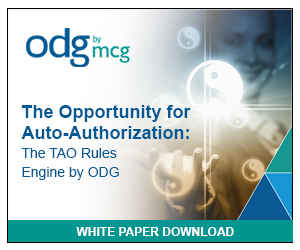Today is
Wednesday, May 28, 2025 -
Industry Insights
January 17, 2009
"Emma Murray" Decision Will Spark Work Comp Changes in Florida
- State: Florida
- - 0 shares
By McConnaughhay, Duffy, Coonrod, Pope & Weaver, P.A.
An end of the year flurry of activity in the field of workers compensation sets the stage for what appears to be another very active year legislatively and from a regulatory standpoint in Florida.
Many of the initiatives for workers compensation reform initially seen in 2008 will form the basis of continued activity for the next year. Further details will be provided as these matters
progress to completion or further debate.
Developing issues include: National Council on Compensation Insurance's estimate of unfunded liabilities as a result of the Florida Supreme Court case of Murray v. Mariner Health Inc. and ACE USA, No. SC07-244 (Emma Murray); the request for increases in premium rates as a result of the Emma Murray decision; development of the maximum compensation rate for injuries occurring after Jan. 1, 2009; issuance of the annual report by the Division of Workers Compensation and Division of Insurance Fraud on fraud within the workers compensation system; notice of proposed rule development concerning changes to Rule 69L-24 Workers Compensation Insurers Standards and Practices.
As reported in last months newsletter, the Florida Supreme Court in the Emma Murray decision recently determined that reasonable attorney fees for injured workers are not limited to a percentage of benefits recovered by the attorney on behalf of the worker. Rather, quantifying such fees could include consideration of other factors, such as time expended by the attorney in the recoupment of benefits.
Many have predicted that this decision will create substantial increases in litigation with corresponding cost increases to the system, contrary to the efforts made in 2003 by the legislature to reduce attorney involvement in the workers compensation system.
A special law only filing rate increase request was filed by the National Council on Compensation Insurance (NCCI) based solely on this Supreme Court decision. This rate increase relates to prospective rates for new, renewal, and existing workers compensation policies (prorated) effective March 1, 2009.
In the minds of many, the real question relates to cost increases to the system (unfunded liabilities) that will result from this Supreme Court decision for dates of accident after Oct. 1, 2003 (the effective date of the 2003 statutory amendments) and the effective date of the rate increase if any (March 1, 2009), a time period in which industry assumed the 2003 limitations on the attorney fees were in effect, but has now proved, as a result of the Supreme Court decision, to be in error.
NCCI now predicts these unfunded liabilities to be potentially up to $400 million, losses that cannot be recouped by industry, because rates are established only prospectively without remedy for unexpected retrospective losses.
According to NCCI, Each insurer's unfunded liability will vary based on many factors including,
but not limited to, the number and the type of open claims, average claim costs and claims-handling practices. As a result, each insurer needs to analyze its own data and calculate its own estimate of its unfunded liability. The effect of such determination on future rates remains in question.
As a result of the Emma Murray decision, NCCI made a law only filing requesting a rate increase based upon a determination that the Murray decision would create in excess of a 2% impact
on existing workers compensation premium rates justifying such a filing (to be distinguished from an experience filing annually made in August of each year based upon the experience of the
system for preceding years).
This rate filing would affect premium charges by approximately 250 insurance companies doing business in the State of Florida.
The overall rate request amounts to an 18.6% increase with an 8.9% increase (representing $240,000,000 in increased premiums in the state) effective March 1, 2009, to the end of the year and the remainder of the increase request beginning Jan. 1, 2010. NCCI believes that it will take two years for the full impact of the Emma Murray decision to be realized.
On Dec. 16, 2008, a hearing was held before Insurance Commissioner Kevin McCarty concerning this rate increase. Since this was a law only filing as opposed to the annual experience filing, the proposed rate increase would apply to existing policies on a pro rata basis.
A decision by the insurance commissioner has not yet been made. However, the focus of the hearing related to whether the rate decreases experienced by industry since the 2003 legislative changes were as a result of only the changes made to claimants attorney fees.
The greater than 60% rate decrease experienced by industry since 2003 could be attributed to many
reasons including improved claims closure rates, improved return to work procedures, declines in accident frequency, increased emphasis on compliance, redefinitions of permanent to compensable accidents, increased emphasis on fraud detection, and changes in attorney fees payable to injured workers attorneys.
The difficulty in determining whether there should be a rate increase based only on the Emma
Murray decision is quantifying the impact of reducing attorney fees payable as a component of the experienced rate decreases since 2003.
Surveys of insurance carriers indicated the substantial cost reductions realized were in significant part as a result of the changed provisions relating to how much attorney fees were paid to injured workers
attorneys.
A decision by the Insurance Commissioner is expected within the very near future if in fact a rate increase can be effective by March 1, 2009, allowing sufficient notice to Florida employers as required by Florida law.
McConnaughhay, Duffy, Coonrod, Pope & Weaver, P.A. is a workers' compensation law firm with more than 50 attorneys and nine offices throughout Florida. This article is reprinted with permission from the firm's Jan. 5, 2009 Workers' Compensation Legislative & Regulatory Update newsletter.
An end of the year flurry of activity in the field of workers compensation sets the stage for what appears to be another very active year legislatively and from a regulatory standpoint in Florida.
Many of the initiatives for workers compensation reform initially seen in 2008 will form the basis of continued activity for the next year. Further details will be provided as these matters
progress to completion or further debate.
Developing issues include: National Council on Compensation Insurance's estimate of unfunded liabilities as a result of the Florida Supreme Court case of Murray v. Mariner Health Inc. and ACE USA, No. SC07-244 (Emma Murray); the request for increases in premium rates as a result of the Emma Murray decision; development of the maximum compensation rate for injuries occurring after Jan. 1, 2009; issuance of the annual report by the Division of Workers Compensation and Division of Insurance Fraud on fraud within the workers compensation system; notice of proposed rule development concerning changes to Rule 69L-24 Workers Compensation Insurers Standards and Practices.
As reported in last months newsletter, the Florida Supreme Court in the Emma Murray decision recently determined that reasonable attorney fees for injured workers are not limited to a percentage of benefits recovered by the attorney on behalf of the worker. Rather, quantifying such fees could include consideration of other factors, such as time expended by the attorney in the recoupment of benefits.
Many have predicted that this decision will create substantial increases in litigation with corresponding cost increases to the system, contrary to the efforts made in 2003 by the legislature to reduce attorney involvement in the workers compensation system.
A special law only filing rate increase request was filed by the National Council on Compensation Insurance (NCCI) based solely on this Supreme Court decision. This rate increase relates to prospective rates for new, renewal, and existing workers compensation policies (prorated) effective March 1, 2009.
In the minds of many, the real question relates to cost increases to the system (unfunded liabilities) that will result from this Supreme Court decision for dates of accident after Oct. 1, 2003 (the effective date of the 2003 statutory amendments) and the effective date of the rate increase if any (March 1, 2009), a time period in which industry assumed the 2003 limitations on the attorney fees were in effect, but has now proved, as a result of the Supreme Court decision, to be in error.
NCCI now predicts these unfunded liabilities to be potentially up to $400 million, losses that cannot be recouped by industry, because rates are established only prospectively without remedy for unexpected retrospective losses.
According to NCCI, Each insurer's unfunded liability will vary based on many factors including,
but not limited to, the number and the type of open claims, average claim costs and claims-handling practices. As a result, each insurer needs to analyze its own data and calculate its own estimate of its unfunded liability. The effect of such determination on future rates remains in question.
As a result of the Emma Murray decision, NCCI made a law only filing requesting a rate increase based upon a determination that the Murray decision would create in excess of a 2% impact
on existing workers compensation premium rates justifying such a filing (to be distinguished from an experience filing annually made in August of each year based upon the experience of the
system for preceding years).
This rate filing would affect premium charges by approximately 250 insurance companies doing business in the State of Florida.
The overall rate request amounts to an 18.6% increase with an 8.9% increase (representing $240,000,000 in increased premiums in the state) effective March 1, 2009, to the end of the year and the remainder of the increase request beginning Jan. 1, 2010. NCCI believes that it will take two years for the full impact of the Emma Murray decision to be realized.
On Dec. 16, 2008, a hearing was held before Insurance Commissioner Kevin McCarty concerning this rate increase. Since this was a law only filing as opposed to the annual experience filing, the proposed rate increase would apply to existing policies on a pro rata basis.
A decision by the insurance commissioner has not yet been made. However, the focus of the hearing related to whether the rate decreases experienced by industry since the 2003 legislative changes were as a result of only the changes made to claimants attorney fees.
The greater than 60% rate decrease experienced by industry since 2003 could be attributed to many
reasons including improved claims closure rates, improved return to work procedures, declines in accident frequency, increased emphasis on compliance, redefinitions of permanent to compensable accidents, increased emphasis on fraud detection, and changes in attorney fees payable to injured workers attorneys.
The difficulty in determining whether there should be a rate increase based only on the Emma
Murray decision is quantifying the impact of reducing attorney fees payable as a component of the experienced rate decreases since 2003.
Surveys of insurance carriers indicated the substantial cost reductions realized were in significant part as a result of the changed provisions relating to how much attorney fees were paid to injured workers
attorneys.
A decision by the Insurance Commissioner is expected within the very near future if in fact a rate increase can be effective by March 1, 2009, allowing sufficient notice to Florida employers as required by Florida law.
McConnaughhay, Duffy, Coonrod, Pope & Weaver, P.A. is a workers' compensation law firm with more than 50 attorneys and nine offices throughout Florida. This article is reprinted with permission from the firm's Jan. 5, 2009 Workers' Compensation Legislative & Regulatory Update newsletter.
Advertisements
Columns
- CAAA: Left in the Smoke 05/28/25
- Gelman: Intentional Wrong? 05/27/25
- Wroten: State's Workers' Comp Crisis a Stark Contrast to National Stability 05/23/25
- Montgomery: Comp Is a Cash Cow, but Insurers Want Higher Rates 05/21/25
- Snyder: Credible Negotiation 05/19/25
- Paduda: The State of Work Comp 05/16/25
- Snyder: Two Opposing Views on Litigation Management 05/14/25
- Montgomery: City Pays Doctor $32 to Treat Injured Employee 05/12/25
- Gelman: Medical Reports Matter 05/09/25
- Montgomery: Rand Gets $300K for UR Study. What's the ROI? 05/05/25
- Salem: Respondent Who Is Not Employer May Not Owe Filing Fee 05/02/25
- Gelman: When Credibility Crumbles 04/30/25
- Montgomery: More States Move to Expand Workers' Comp PTSD Coverage 04/28/25
- Gelman: The Toll of Neglect 04/25/25
- CAAA: Fraud in the Workers' Comp System 04/23/25
- Gelman: Broken Medical Promises 04/21/25
- Langham: Never Give Up, Never Surrender 04/18/25
- CAAA: The Dismantling of NIOSH 04/16/25
- Ahmed: Strategies for Successful Negotiation 04/14/25
- Shabestari: Addressing Venue in Work Comp Claims 04/11/25
Now Trending
- Workers' Compensation News
-
Calif. WCAB Says
Judge Exceeded Authority in
Ordering Replacement…
Posted on May 21, 2025
-
Calif.
Appropriations Committees Pass Comp…
Posted on May 28, 2025
-
Calif. Prosecutors
Lay 15 Felonies on Ex-Cop Suspected
of…
Posted on May 21, 2025
-
Calif. 9th Circuit
Finds Employer Rebutted LHWCA Claim
for Cumulative Knee…
Posted on May 27, 2025
-
Calif. Court Says
Tribal Immunity Extends to Health
Care…
Posted on May 22, 2025
-
Calif. Security
Company Owner Sentenced in $3.4M
Comp Fraud…
Posted on May 21, 2025
-
N.Y. Elderly,
Cancer-Stricken Worker Gets
Hardship…
Posted on May 23, 2025
-
Pa. Claims
Administrator Can't Rely on Online
Product Prices to Contest…
Posted on May 21, 2025
-
Iowa Court Upholds
$2.8 Million Verdict in Gross
Negligence…
Posted on May 22, 2025
-
Iowa Supreme Court
Reinstates Civil Suit Over COVID
Deaths of Meat Processing…
Posted on May 28, 2025
Jobs
Upcoming Events
Jun 11-13, 2025
CCWC 2025 Educational Conferen
For two decades, CCWC has assembled the key players in the workers’ compensation arena for what is …
Jun 14-28, 2025
2025 Legal Specialization Test
Course Description: This 3-part series instructed by experienced workers’ compensation attorney an …
Sep 2-4, 2025
San Diego Elevate Workers' Com
We are thrilled to announce that Early Bird registration is OPEN for ELEVATE® 2025! This year's …
Social Media Links
WorkCompCentral
c/o Business Insurance Holdings, Inc.
c/o Business Insurance Holdings, Inc.
PO Box 1010
Greenwich, CT 06836
(805) 484-0333
Greenwich, CT 06836




No Comments
Log in to post a comment